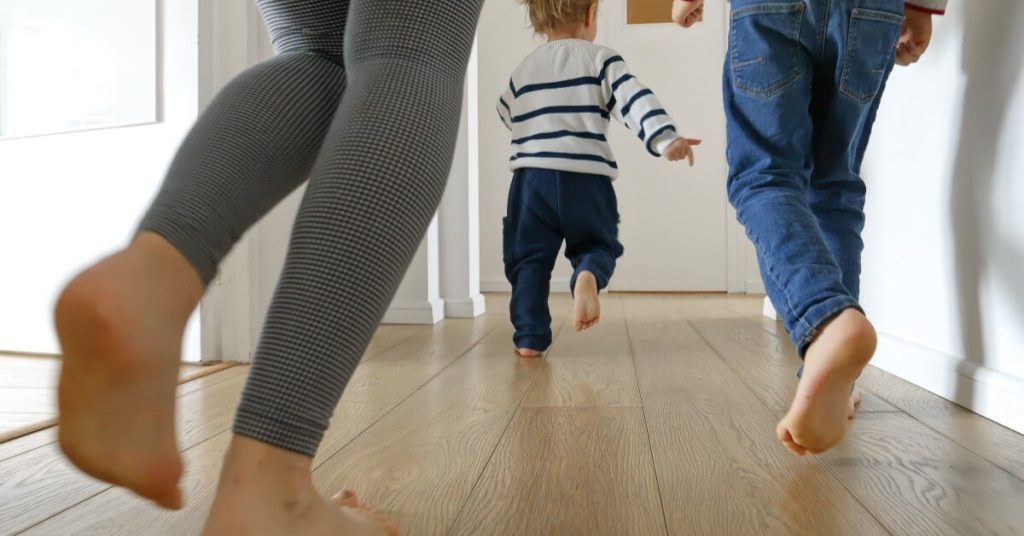
Top 5 Foot Disorders Explained | The Takeaway
Overview
Your feet are some of the most complex structures in the human body, comprising 26 bones, 33 joints, and hundreds of muscles and tendons. Our feet are designed to carry us and bear our weight for a lifetime. Yet, they are also some of the most neglected parts of the body.
Due to its functions and positioning, the human foot is susceptible to injuries and infections. At the same time, genetic disorders such as clubfoot or flat feet can also impact one’s quality of life.
In addition, disorders such as rheumatoid arthritis and diabetes can disproportionately affect feet and can be exacerbated by improper footwear and care.
This article will focus on five of the most common foot problems that can happen and offer some prevention tips.
Top 5 Foot Disorders Explained
1) Athlete’s Foot: Caused by a fungus infection, this is possibly the most common foot disorder and will affect most people in their lifetimes – up to 15 percent, according to some estimates.[1]
The fungus that causes the condition enters the skin through small cracks, most commonly between the little toe and the one next to it, causing the skin to look flaky and feel itchy. Creams and gels available over-the-counter can cure the condition.
Risk factors include:
- Genetic predisposition
- Allergies and eczema
- Very sweaty feet
- Immune system issues
- Circulation problems
- Certain sports, such as running
Tips to Avoid Athlete’s Foot:
- Thoroughly dry your feet with a towel after a shower, bath, or swim
- Wear shoes that correctly fit, which means they are not too tight and allow the feet to breathe
- Try not to wear the same pair of shoes two days in a row
- Take your shoes off as often as possible
2) Ingrown Toenails: This condition can happen when a toenail grows into the surrounding skin and tissue. It is the most common nail problem in podiatry and affects mainly the big toe, teenagers, and young adults, although it can happen at any age.[2]
It is caused by improper/insufficient trimming of the nail or sometimes injury. Non-invasive treatments include soaking the feet in warm, soapy water, lifting the affected nail with cotton, dental floss, a splint to help the nail grow away from the soft tissue, or taping to pull the nail away from the skin.
For more severe cases, surgical interventions can be used to remove the portion of the nail that has been ingrown or even remove the nail entirely for the most severe cases.
Tips to Avoid Ingrown Toenails:
- Trim your nails straight across
- Trim your nails to an appropriate length (i.e., even with the tips of your toes), as trimming them too short can also cause ingrown nails
- Wear properly-fitting shoes, and if needed in some instances, wear protective footwear such as steel-toed boots

3) Blisters: Also known as friction blisters, this painful condition is caused by overexposure to friction, such as can happen with running, hiking, or military training.[3]
In each case, a blister is formed when skin layers are separated with friction that causes fluids to seep in and the painful condition to develop.
The most common home remedy for blisters is using a clean needle to prick the blister in several places, allow it to drain, and apply an ointment (such as petroleum jelly) with a non-stick bandage.
Tips to Avoid Blisters:
- Wear well-fitting shoes and avoid anything that may be too tight
- Try wearing moisture-wicking socks
- Try a blister-reducing insole; these can be found at most drugstores
- Try attaching moleskin to the area of the shoes where blistering can occur; this can further reduce friction[4]
4) Corns and Calluses: Related to blisters in an odd way, these common foot issues are patches of skin that usually form on the toes or soles of the feet to prevent blisters.
However, over time, corns and calluses can themselves become very painful. Fortunately, they are also some of the easier foot conditions to treat as many over-the-counter remedies, such as corn plasters, protect the affected areas from friction as they heal.
Tips to Avoid Corns and Calluses:
- Wear shoes that allow for plenty of toe room
- Keep your feet moisturized to prevent dryness
- Keep your feet clean by washing them with soap and water every day
5) Heel Spur: This condition can be the first manifestation of heel pain, which can be due to other issues, such as plantar fasciitis, but a heel spur can be debilitating due to the pain and location involved.
A heel spur is a calcium deposit that causes a bony protrusion on the underside of the heel bone over time. Although the exact causes of this condition have not been fully understood, it’s suspected that carrying a large amount of body weight for a long time is a major contributing factor.
Activities that cause extreme stress on the heel, such as marathon running, can also cause heel spurs and middle and older age.[5]
Shoe inserts, physical therapy, and stretching exercises are conservative treatments that can be applied successfully. Still, there are surgical interventions for more advanced cases that can remove the spur itself.
Tips to Avoid Heel Spurs:
- Wear well-fitting shoes
- Choose shoes that are appropriate for the activity you plan to do (i.e., proper running shoes)
- If you are overweight, lose weight to take pressure off the heel
The Takeaway
Our feet, crucial yet often overlooked, face numerous challenges, from fungal infections to structural issues like heel spurs.
Prioritizing foot health, selecting appropriate footwear, and practicing regular care can prevent these ailments.
By understanding and addressing these problems early, we can ensure lifelong foot health and mobility. Remember, prevention is paramount; give your feet the care and attention they deserve.
References:
- InformedHealth.org [Internet]. Cologne, Germany: Institute for Quality and Efficiency in Health Care (IQWiG); 2006-. Athlete’s foot: Overview. 2015 Jan 14 [Updated 2018 Jun 14]. Available from: https://www.ncbi.nlm.nih.gov/books/NBK279549/
- Chabchoub, I., & Litaiem, N. (2022). Ingrown Toenails. In StatPearls. StatPearls Publishing.
- Rushton, R., & Richie, D. (2023). Friction blisters: A new paradigm to explain causation. Journal of athletic training, 10.4085/1062-6050-0309.22. Advance online publication. https://doi.org/10.4085/1062-6050-0309.22
- Rushton R. J. (2020). Exploring the Mechanism for Blister Prevention Using Moleskin. Current sports medicine reports, 19(11), 451–453. https://doi.org/10.1249/JSR.0000000000000768
- Velagala, V. R., Velagala, N. R., Kumar, T., Singh, A., & Mehendale, A. M. (2022). Calcaneal Spurs: A Potentially Debilitating Disorder. Cureus, 14(8), e28497. https://doi.org/10.7759/cureus.28497

